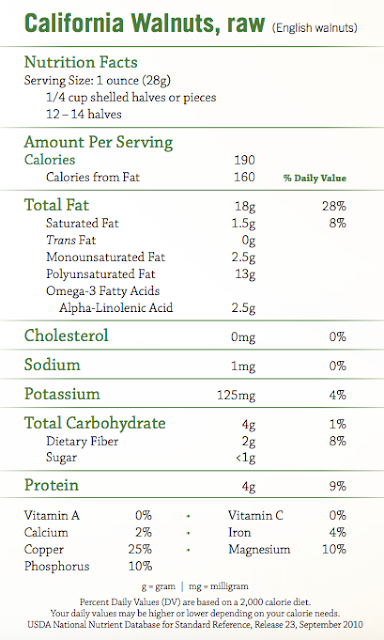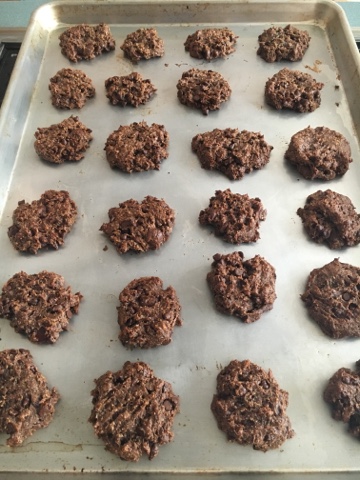Notes:
- I love the buttery flavor of these cookies when made with walnuts, but I have a feeling that pecans or almonds would work well, too.
- If you don’t have access to dates, raisins can be substituted in most cases, but the flavor will be slightly different.
- If you don’t want to use a flax egg, one chicken egg can be used instead.
- Optional add-ins that are free of added sugar include: cacao nibs, raisins, shredded coconut, chopped n
Walnuts are nutrient powerhouses comprised primarily of polyunsaturated
fat (PUFA) (13 grams out of 18 grams total fat). In fact, walnuts are the only
nut–and one of few foods–to provide an excellent source of alpha-linolenic
acid (ALA)—the plant-based form of omega-3. In one ounce (12–14 halves;
¼ cup) there are 2.5 grams of ALA–more than eight times the amount
found in the next highest nut!
Omega-3s are essential fatty acids critical to various body processes and
known to reduce inflammation. The body can only obtain these necessary
fatty acids through food. Research has suggested that omega-3s may also help
reduce the risk of some chronic diseases.
A Source for Antioxidants
Research1
has suggested that antioxidants may help to protect from certain
chronic diseases of aging, including cardiovascular, neurological and
carcinogenic ailments due to their ability to control free radicals – known
to negatively influence healthy aging. Walnuts are known for their high
antioxidant content (13.126 mmol/100 grams).
A 2010 study2
investigating the antioxidant activity of different dry fruits found
walnuts to exhibit the best antioxidant properties. Additional research3
testing
1113 different foods for antioxidant levels reported walnuts rank second only to
blackberries in terms of antioxidant content. Ellagic acid and gamma tocopherol, a
form of vitamin E, are two antioxidants that are thought to have anticarcinogenic
properties; both are found in walnuts. Melatonin, an antioxidant known for its sleep
regulating properties is also naturally found in walnuts. Research, led by melatonin
expert Russel Reiter, PhD4
, published in the September 2005 issue of Nutrition: The
International Journal of Applied and Basic Nutritional Sciences, reported the calculated
concentrations of melatonin in walnuts was 3.5 +/- 1.0ng/g.
Percent Daily Values (%DV) are for adults or children aged 4 or older, and are based on a 2,000 calorie reference diet. Your daily values may be higher or lower based on your individual needs.
Nutrition Data’s Opinion, Completeness Score™, Fullness Factor™, Rating, Estimated Glycemic Load (eGL), and Better Choices Substitutions™ are editorial opinions of NutritionData.com, given without warranty, and are not intended to replace the advice of a nutritionist or health-care professional. Nutrition Data’s opinions and ratings are based on weighted averages of the nutrient densities of those nutrients for which the FDA has established Daily Values, and do not consider other nutrients that may be important to your health or take into account your individual needs. Consequently, Nutrition Data’s higher-rated foods may not necessarily be healthier for you than lower-rated ones. All foods, regardless of their rating, have the potential to play an important role in your diet.
The Amino Acid Score has not been corrected for digestibility, which could reduce its value.




